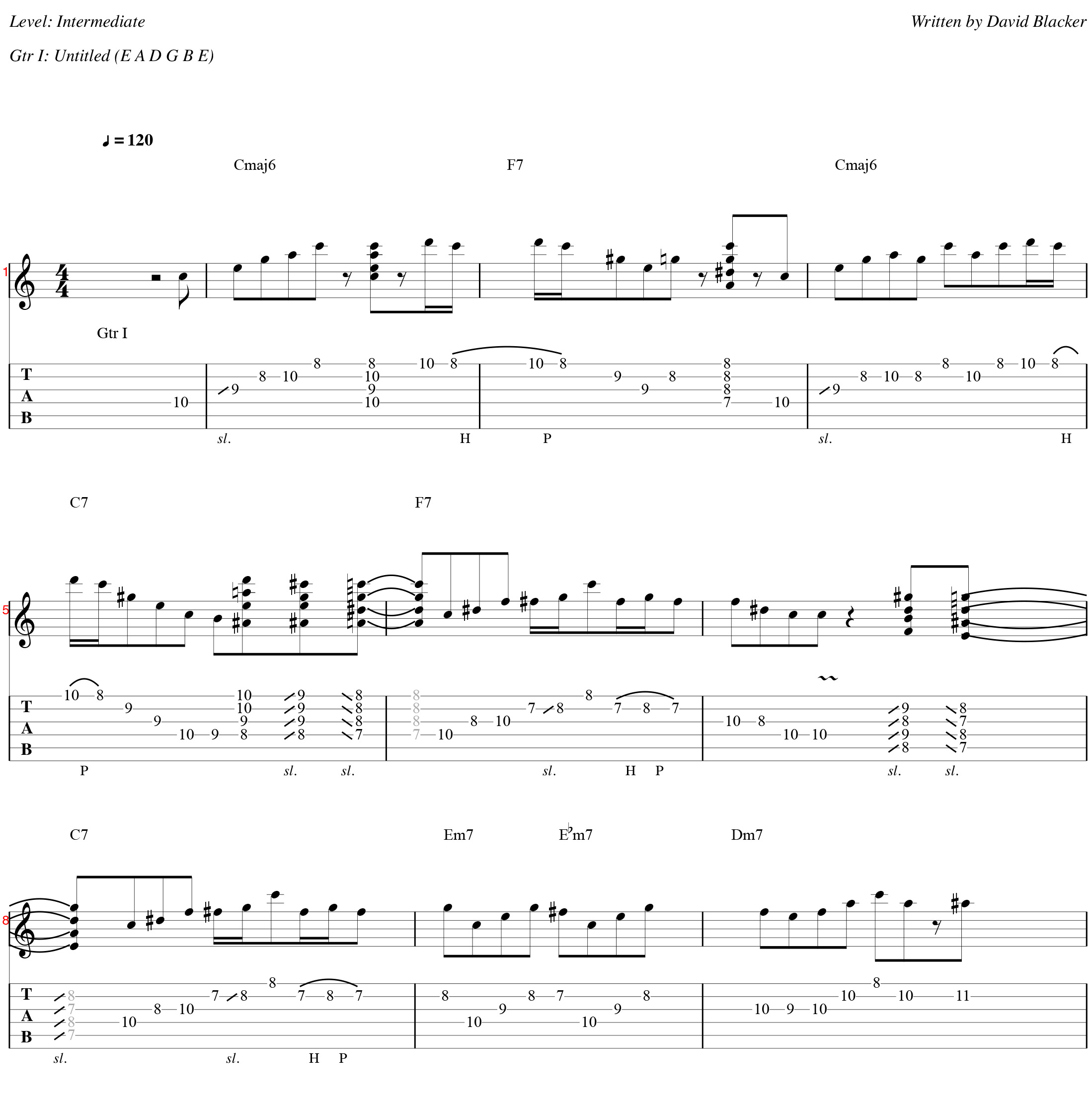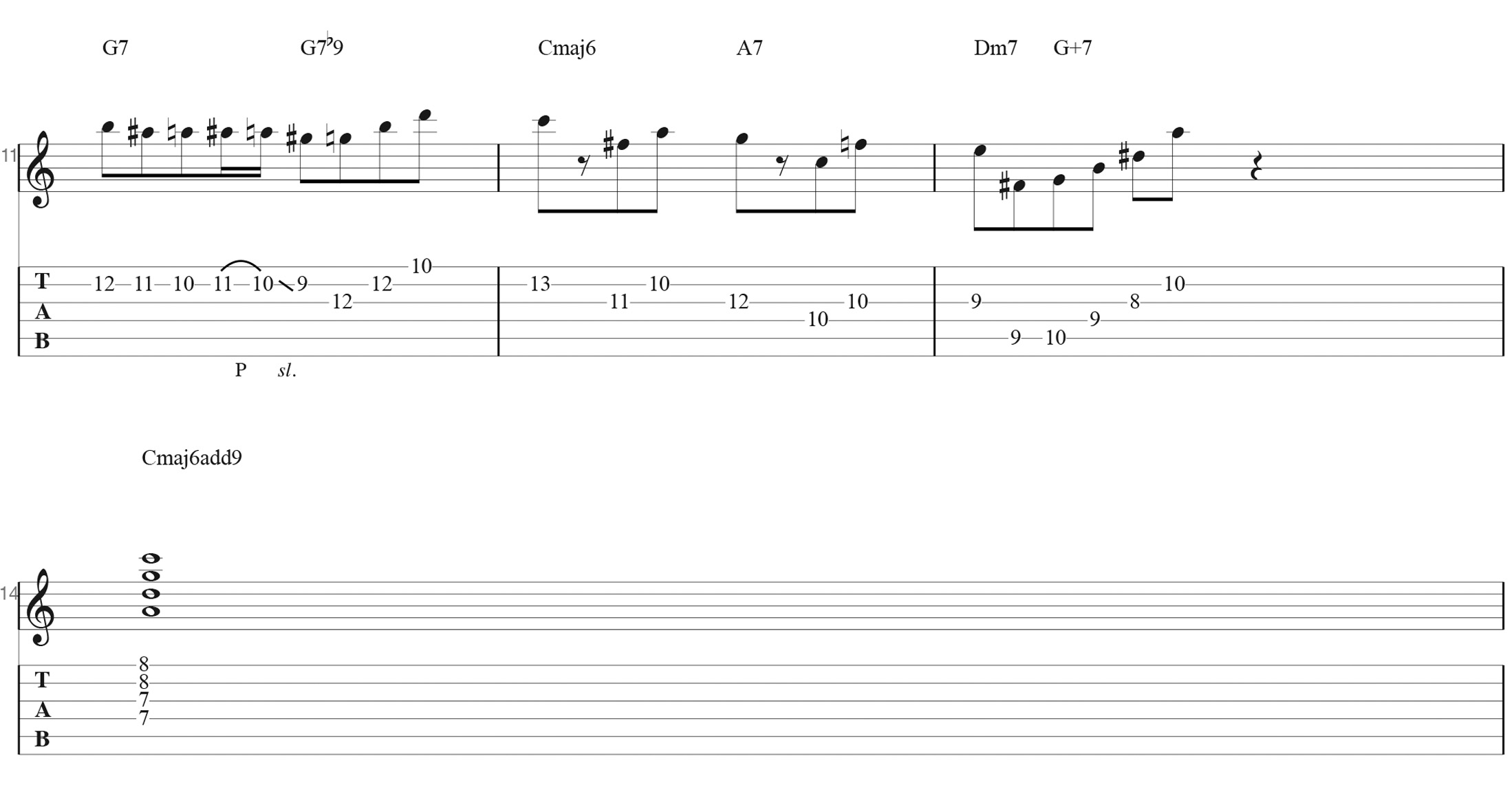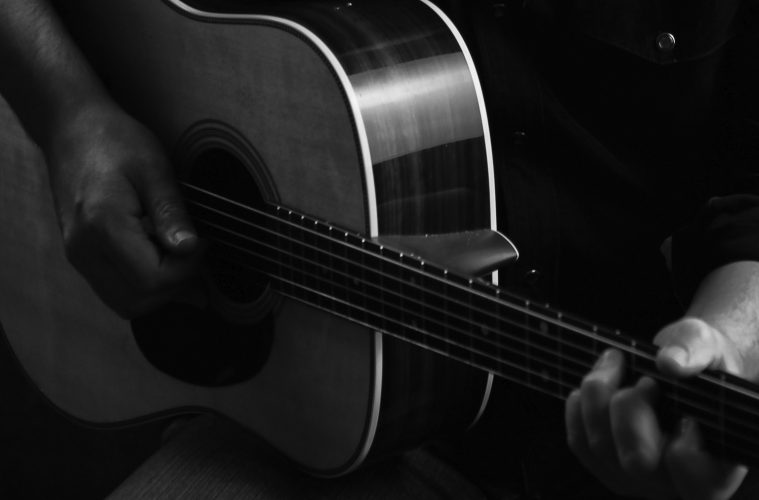The spectrum of jazz-inspired blues guitar styles is pretty wide ranging. You’ve got classic blues artists like T-Bone Walker, Pee Wee Crayton and Lonnie Johnson, who’ve developed a kind of sophisticated “uptown blues” sound. At the same time, there are more jazz-centric players like Kenny Burrell, Herb Ellis and Grant Green who color their lines with a heavy dose of the blues. Then there’s the countless shades in the middle from rockabilly, to western swing to soul jazz and beyond. What great players across all these styles have in common, is that they approach a twelve-bar blues with a sense of expanded harmony. Beyond the standard I-IV-V changes, they have a wide range of options from which to create melodic ideas.
In addition to learning the solos and phrases of players that you want to emulate, a great learning tool can be to simply practice accompanying yourself through a twelve-bar progression. What I mean by this is to cover both rhythm and lead playing, in a kind of call and response format. I’ve found that practicing this way forces me to internalize the key harmonic transitions within the progression. It also forces me to be much more lyrical and melodic, rather than just cycling through licks without a sense of context. In short, creating new melodic ideas becomes much easier, and it also tunes your ear, so that when you hear Charlie Parker blowing over an uptempo progression, you start to hear the chords he’s outlining.
Implying chord changes, is one of the main concepts that runs across my two Swing Blues courses, and West Coast Blues as well. In these courses, I focus a lot on vocabulary building and theory. I’ve put this little exercise together to kind of bring some of those pieces together into a practical approach to daily practice. It’s a simple 12-bar blues, played basically as a self-accompaniment piece (although I included a simple bass line to outline the changes). My hope is that it inspires you to experiment with a call and response style self-accompaniment practice, as it has been an invaluable tool for me.
JAZZ BLUES MELODIC PATHWAYS


MEASURES 1-4 (KEY CONCEPTS)
In the first measure we open with a straight-ahead C major 6th run, into a C major 6th chord stab. As we transition into the IV chord, there are some kind of “out” passing tones, specifically notes 3 & 4 in measure #2. Let’s look at those notes, which are a G# (9th fret of B) and an E (9th fret of G). On the face of it, that E note is all wrong over the IV chord F7. But played in sequence with the G# note preceding it, it implies the top part of an F#9 chord. An F#9 chord is an excellent transitional chord on route to an F9. This is a concept I call “half-steppin’” in my Swing Blues Rhythm Survival Guide. Approaching target chord tones from a half step above or below, is a great technique for creating tension and movement within a progression. At the end of measure 4, we have more voice leading / half step ideas that lead into the IV chord, but this time, the half step moves are played as chord stabs rather than lead lines.
MEASURES 5-6 (KEY CONCEPTS)
In measures 5-6 the ideas are pretty much straight ahead C pentatonic, which always work well over F7, the IV chord. The only place where we break out of the pentatonic is on the last 3 notes of measure 5, with a trill from the 7th to 8th fret, incorporating the flat 9 of the IV chord. A IV7b9 is a common jazz-blues substitution over the second measure of the IV chord within a jazz-blues. In this case, we are using it to lead into the 2nd measure of the IV chord, which works well too.
MEASURES 7-8 (KEY CONCEPTS)
The 7th measure opens with some meaty T-Bone style 9th chord stabs, into another pentatonic run, like the one over the IV chord. In the 8th measure we have a melodic sequence that implies a really important harmonic movement in a twelve-bar jazz-blues – the transition from the 8th measure into the ii-V-I turnaround. Specifically in this case, it is the chromatic movement from the iii chord down to the ii chord. So in the key of C that is Em – Ebm – Dm (another common transition/substitution to use here is to go move from the iii chord, to the vi chord, into the ii chord). The chromatic voice leading here starts on the 8th fret of the B string – moving from G to Gb, and concluding on an F for the downbeat of the ii chord. The ii chord is Dm, so that F (flat 3rd) perfectly implies the Dm change.
MEASURES 9-12 (KEY CONCEPTS)
In measure 9, we are basically outlining the primary chords tones of the ii chord. The last note in measure 9 (11th fret of b string), is a chromatic passing tone leading into the major 3rd of the V chord on the downbeat of measure 10. Then we riff chromatically down to the flat 9, which creates the right tension for the resolution back to the I chord. The piece concludes with a series a descending melodic major scale intervalic riffs, which work well over the final I vi ii V turnaround. The piece closes with a G augmented arpeggio into a C6/9 chord.


